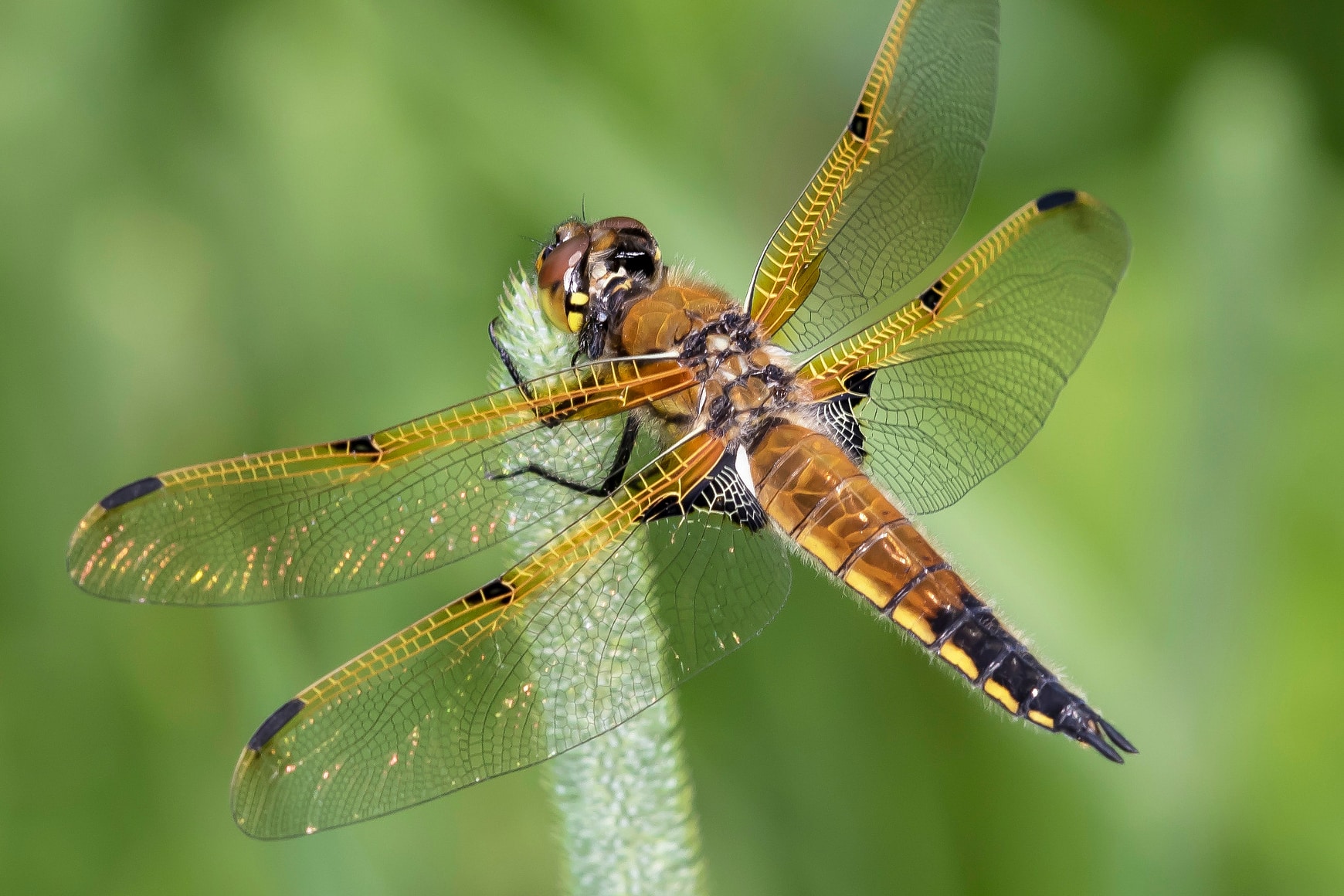About Odonata Species
- Odonata is an insect order consisting of three groups: Anisoptera (which includes dragonflies), Zygoptera (which includes damselflies), and Anisozygoptera (a relict group represented by only two living species).
- It is one of the ancient orders of insects.
- Odonata is a diverse group, with over 6,000 known species.
- Distribution:
- They are globally distributed, from the tropics, where they are most numerous and varied, to the boreal forests of Siberia and North America.
- They are also found throughout the Southern Hemisphere, with the exception of Antarctica.
- India is highly diverse, with more than 500 known species.
- Habitat: They are found in a variety of habitats, such as freshwater environments like ponds, rivers, and lakes, and are typically associated with bodies of water during their larval stage.
- Features:
- Many characteristics distinguish Odonata from other groups of insects: minute antennae, extremely large eyes (filling most of the head), two pairs of transparent membranous wings with many small veins, a long slender abdomen, and an aquatic larval stage (nymph).
- The abdomen is almost always longer than any of the wings.
- More than 80% of their brain is devoted to analyzing visual information.
- Large, active by day, and often strikingly coloured, they are usually seen flying near water.
- Their mouths have been adapted for biting, making them efficient hunters.
- Adult odonates are voracious predators, as are the aquatic larvae.
Key Facts about Mudumalai Tiger Reserve:
- Location:
- It is located in the Nilgiris District of Tamil Nadu, spread over 321 sq. km. at the tri-junction of three states, viz, Karnataka, Kerala, and Tamil Nadu.
- It lies on the Northeastern and Northwestern slopes of the Nilgiri Hills, which are part of the Western Ghats.
- It is part of the Nilgiris Biosphere Reserve, the first Biosphere Reserve in India.
- It has a common boundary with Wayanad Wildlife Sanctuary (Kerala) on the West, Bandipur Tiger Reserve (Karnataka) on the North, the Nilgiris North Division on the South and East, and Gudalur Forest Division on the South West.
- The name Mudumalai means ” the ancient hill range”. Indeed, it is as old as 65 million years when the Western Ghats were formed.
- Terrain: The terrain is undulating, with the elevation ranging from 960m to 1266m.
- Habitat: A variety of habitats ranging from tropical evergreen forest, moist deciduous forest, moist teak forest, dry teak forest, secondary grasslands, and swamps are found here.
- Flora:
- It has tall grasses, commonly referred to as “Elephant Grass”, bamboo of the giant variety, and valuable timber species like Teak, Rosewood, etc.
- It has wild relatives of cultivated plants: wild rice, ginger, turmeric, cinnamon, etc.
- Fauna: Includes Tiger, Elephant, Indian Gaur, Panther, Sambar, Spotted Deer, Barking Deer, Mouse Deer, Common Langur, Malabar Giant Squirrel, Mangoose, and Hyena, among others.
- The recent Oscar-winning ‘Elephant Whisperers’ was filmed at the Theppakadu Elephant Camp, located inside the Mudumalai Tiger Reserve.
Q1) What are boreal forests?
Boreal forests, or taiga, are the largest land biome on Earth. They are vast, dense forests of coniferous evergreen trees found in the Northern Hemisphere, mainly in high-latitude regions of North America, Europe, and Asia.
Source: 50 Odonata species identified on first day of survey in Mudumalai Tiger Reserve
Last updated on December, 2025
→ Check out the latest UPSC Syllabus 2026 here.
→ Join Vajiram & Ravi’s Interview Guidance Programme for expert help to crack your final UPSC stage.
→ UPSC Mains Result 2025 is now out.
→ UPSC Notification 2026 is scheduled to be released on January 14, 2026.
→ UPSC Calendar 2026 is released on 15th May, 2025.
→ The UPSC Vacancy 2025 were released 1129, out of which 979 were for UPSC CSE and remaining 150 are for UPSC IFoS.
→ UPSC Prelims 2026 will be conducted on 24th May, 2026 & UPSC Mains 2026 will be conducted on 21st August 2026.
→ The UPSC Selection Process is of 3 stages-Prelims, Mains and Interview.
→ UPSC Result 2024 is released with latest UPSC Marksheet 2024. Check Now!
→ UPSC Prelims Result 2025 is out now for the CSE held on 25 May 2025.
→ UPSC Toppers List 2024 is released now. Shakti Dubey is UPSC AIR 1 2024 Topper.
→ UPSC Prelims Question Paper 2025 and Unofficial Prelims Answer Key 2025 are available now.
→ UPSC Mains Question Paper 2025 is out for Essay, GS 1, 2, 3 & GS 4.
→ UPSC Mains Indian Language Question Paper 2025 is now out.
→ UPSC Mains Optional Question Paper 2025 is now out.
→ Also check Best IAS Coaching in Delhi

















